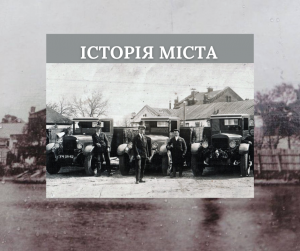Koryukivka is a city located in the northern part of Chernihiv region.
The Cossack Period
Koryukivka was founded in 1657, during the reign of Hetman Bohdan Khmelnytskyi, by Cossacks from Right Bank Ukraine. The Cossacks liked a place reliably protected by forests on the banks of the Brech River and founded a settlement, led by the Cossack Omelyan Karuka.
That is why the settlement was named Koryukivka - in honor of one of the first Cossack settlers Omelyan Karuka. That is why the city was often called "Karukivka" in the past.
The first people of Koryukivka lived in dugouts, cut down the forest, hunted, and raised bees.
Such information is recorded in many sources. And nearby, in the legends, there is a legend, allegedly Karuks or Koryuks were those who escaped from serfdom, since ancient times they hid here in impassable thickets among rivers and swamps, earning a living by stripping bark from trees, selling it to the Cossacks Chernihiv regiment. And later they tanned hides, made harnesses and carts, drove tar, made wooden products, toys, dishes, etc.
At first, Koryukivka belonged to the Kyseliv centurions, and then to three hetmans - Ivan Samoilovych, Ivan Mazepa and Pavel Polubotko.
Koryukivka was a small settlement, more like a village than a city. About half of the households lived from handicrafts. Local coopers made wooden containers and dishes, stelmakhs made carts, sledges, wheels, shoemakers sewed boots. Part of the people of Karukiv, having no land and crafts, lived on daily earnings.
Development of sugar production
In 1858, a foreign entrepreneur Karl Rauch built a sugar factory on the eastern outskirts of the village of Koryukivka, where 350 people worked.
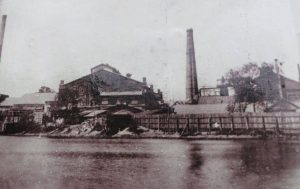
In 1871, the russian entrepreneur Shubin bought this factory and in 1872 built another sugar factory, and in 1876, after the reorganization of production, a sugar refinery was put into operation, which had 7 thousand acres of land at its disposal. 600 people worked at the factories, and more than 5.5 million rubles worth of granulated sugar was produced during the season. In 1887, both plants were purchased by Lazar Brodsky. In 1901, the new owner expands it, employing around 1,000 workers – three times the number under Karl Rauch. The products of Koryukivka sugar factories even won a gold medal at the world exhibition in Paris (1900).
It was at this time that the city began to actively develop. A one-class school was opened in Koryukivka, and in 1882 - a wooden Ascension Church. In 1884, the railway was built.
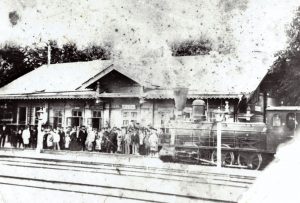
1886 - church parish school, 1896 - Zemstvo school. In 1897, a brick factory was built.
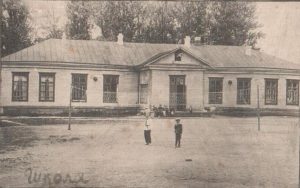
And in 1904, a hospital was built, which was the best in this district. In 1917, a revolution began in the empire, the peasants of Koryukivka began to seize the inventory of factories. Thus ended the history of sugar production in Koryukivka.
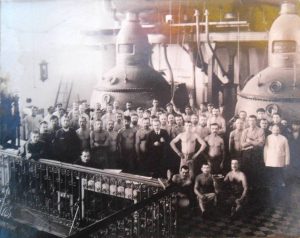
Soviet occupation and the USSR
In January 1918, revolutionary Baltic sailors established Soviet power in Koryukivka. Property and factories were nationalized. At that time, 2 children's homes were created in Koryukivka.
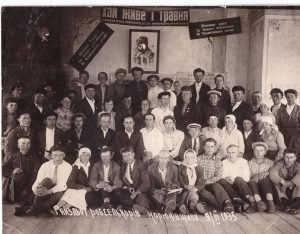
At the same time, the policy of collectivization was taking place in the city and surrounding villages. People were forced to join collective farms, and those who resisted were subject to expulsion and eviction. In this connection, there is resistance of the population, both organized and spontaneous. In 1931, the underground organization "Free Cossacks Party" was exposed, which was headed by the dispossessed peasant Mosol and the former officer Zabarovsky. Mosol had previously been deposed and exiled, but escaped from exile. A total of 130 people were arrested, mostly from Oleksandrivka, as well as from Verholissya, Zabarivka, Sahutivka, Tyutyunnytsia (villages near Koryukivka). They had previously set fire to several collective farm property, raided the premises of the village council in Oleksandrivka and burned down the house of its head. Also, the underground campaigned and intimidated collective farm assets.
The ultimate goal: the overthrow of the Soviet government through an armed uprising and the restoration of independent Ukraine. A year later, a small cache of weapons was found in the possession of Ivan Motloh, a member of this organization.
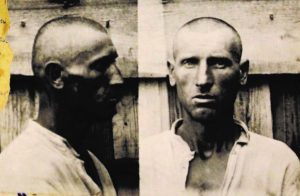
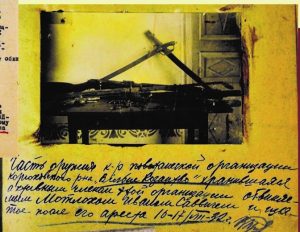
Collectivization and merciless plans for grain procurement led to famine.
Holodomor in Koryukivka
In May 1933, the villages of Kozylivka, Okhramievichi, Oleksiivka were put on the "black board", and in June the entire Koryukivka district.
Many of the witnesses of the famine in the Koryukiv district pointed to bad weather as the cause of the famine: rains, drought, but at the same time they also mentioned the "tow brigades" and the lack of any help from the authorities. Ivan Yudenko and Hanna Ruban from Brecha mentioned the towing teams. Since the peasants hid food stocks, the brigades went around the yards with metal probes, searched attics, cellars, furnaces, dug up gardens and vegetable gardens, taking away all food stocks, including sauerkraut, beans, and beets. Even clothes were taken away.
Cows were the great hope for salvation. The collective farm workers were fed little by little in the collective farms, where kitchens were organized. In our region, it was possible to survive at the expense of forests and water bodies. They caught fish, frogs, collected mushrooms, berries, leaves, tree bark, sorrel, quinoa, and other wild plants.
Banditry and theft of both collective farm and personal property have increased significantly. People wanted to survive at any cost. So, on the night of March 19, 1933, during the theft of potatoes in the collective farm named after Petrovskyi (Olexandrivka village), woodworking instructor of the local school Yuriy Vereshchaka was caught. During the investigation, it turned out that Vereshchaka had already stolen 224 kg of potatoes and organized a group of 8 people for further thefts. Such a phenomenon as cannibalism (cannibalism and corpse-eating) has spread. In particular, in the village In the summer of 1934, the severed hands of two children were found in Domashlin, but the bodies were not found. The body of a 19-year-old girl without limbs was found in one of the barns. The investigation established that the missing parts of the bodies were eaten, and the rest were left for further eating. Even in 1934, there were many swollen and exhausted people walking around Koryukivka and the villages asking for food. Up to 100 stray children were found in Koryukivka alone. An orphanage was set up for the youngest, under the age of 4 (25 children). Another 60 children were taken by relatives. The police sent many children from Gomel, Bakhmach, Kharkiv, and other cities where they wandered. There were many people swollen from hunger lying in all 4 hospitals of the district.
The Second World War and the Koryukivka tragedy
On September 5, 1941, the first German troops entered Koryukivka. From September 1941 to March 1943, the Nazis shot party activists, Komsomol members, collective farm workers, representatives of the intelligentsia, those suspected of connections with the partisans, underground workers, families of partisans and the partisans themselves, Jews, Gypsies.
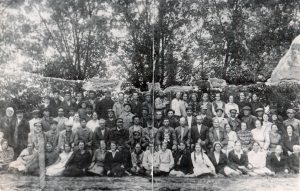
In total, 475 Jews lived in Koryukivka before World War II (according to the 1939 census). Since its beginning, many representatives of this nation remained in the occupied territory. Some did not believe in the story about the atrocities of the occupiers, so the issue of evacuation by some Jewish families was not even considered. There were other reasons: large families, old age, infirmity. And when the Germans entered Koryukivka, they almost immediately began to kill Jewish men, and later women and children, individually and with families in different parts of the village, were taken to be executed in the direction of the cities of Chernihiv and Snovsk.
From this time, the period of partisan history of our region begins. The forests near Koryukivka became the center of the Soviet partisan movement in the Chernihiv region. You can read more about the activities of partisans in this territory and what led to the Koryukiv tragedy - the most massive punitive operation of the Nazis among the civilian population in Europe in the Koryukivka tragedy section.
The present


